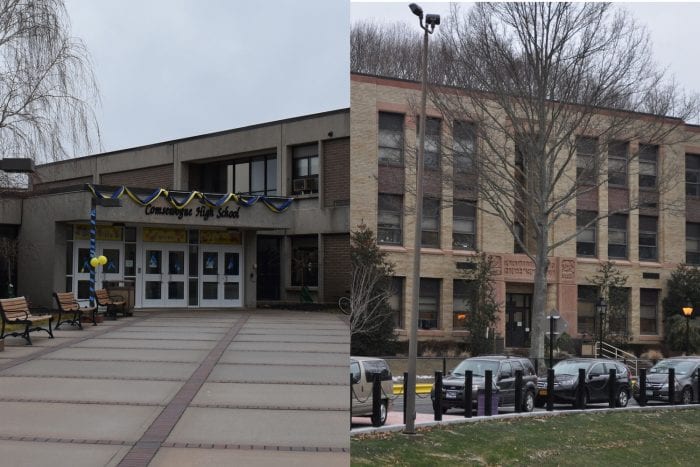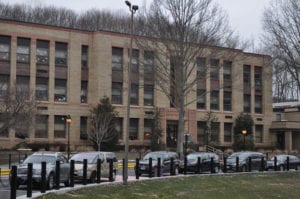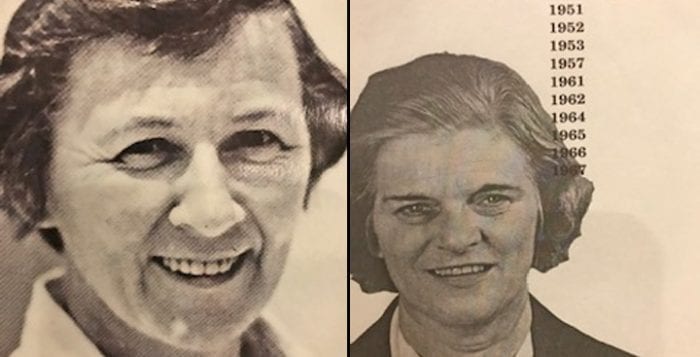It very well could be a challenging next few years for school districts all across Long Island, let alone the North Shore. Districts await with bated breath any announcement from New York State regarding any new mandates, let alone the announcement for when schools could potentially let students back into buildings. Not to mention, the potential drastic cuts in state aid due to major state budget shortfalls. Meanwhile, Gov. Andrew Cuomo (D) has set up committees headed by billionaire Bill Gates and others to look at “reimagining” education, though what that will mean down the line could have major impacts on school district operations.
With that, only two of four local school districts have contested elections, but all still face similar issues. Given these challenges, The Port Times Record has given all board candidates the chance to say what challenges they see ahead for their districts.
For more information about districts’ 2020-21 budgets, visit www.tbrnewsmedia.com/tag/school-budgets
Comsewogue
With two seats up on the Comsewogue School District board of education, two incumbents were the only ones to throw their names in the race.
 Alexandra Gordon
Alexandra Gordon
Alexandra Gordon was first elected in 2011 and has served three terms on the board. A caseworker for the Suffolk County Office for the Aging, she said her knowledge of issues facing the elderly helps frame board decisions in a wider community lens. She currently serves as the boards vice president.
“The effects of the COVID-19 pandemic will be felt for a long time,” she said. “I anticipate significant challenges in state funding, which will result in the need for creative planning and perhaps difficult decisions.”
With three children having already graduated from the district, and one rising senior at Comsewogue High School, she said despite having to create distance learning programs on the fly, the district has seen a 90 percent participation rate, “which I believe speaks volumes,” she added.
“Nothing can ever replace the connection between teachers and students in person — but our teachers are trying very hard to stay connected,” Gordon said.
The board VP said she anticipates significant challenges with state funding, with which the district will need to plan creatively and perhaps make difficult decisions. With New York potentially slashing funding by 20 percent across the board, she said it would be “devastating” to Comsewogue. The governor also has the ability to modify funding at different points throughout the school year.
“This poses its own challenge — we plan a budget based on funding the state tells us we will receive,” Gordon said. “Changes to that number mid-year could present problems.”
She said she is working as the chair of the Legislative Advocacy Committee to contact federal legislators about giving aid to the state in its time of need. She added the district will need to vociferously advocate for funding at the state level from state legislators.
“We cannot be passive when faced with these challenges,” Gordon said.
 James Sanchez
James Sanchez
A 27-year resident of the district, James Sanchez is running again for his seat on the board. He was first elected in 2011 and works as a dockmaster for the Port Jefferson ferry.
Sanchez did not respond to requests to answer a set of emailed questions by press time.
Port Jefferson
Port Jefferson has two seats open, with one incumbent and one newcomer running for the open spots. Current trustee Ryan Biedenkapp will not be running again to retain his seat.
 David Keegan
David Keegan
Two-term trustee David Keegan is again running for school board, having originally been elected to the position in 2017.
Keegan’s day job is as a vice president of sales for Presidio Networked Solutions, a technology services and consulting firm. He said he decided to run again because, “I believe public education is critical and fundamental to enabling the success of our people and our nation.” “Port Jefferson has a rich history of success and it is gratifying to help continue and enhance that, particularly in these times, with both the unprecedented virus and the implications of the LIPA settlement.”
Both those issues are weighing heavily on board members and administrators’ minds. The current budget has had to account with the loss of property tax revenue from the LIPA-owned Port Jefferson Power Station, as well as potential significant reductions in state aid.
Keegan said the pandemic has forced the district to reconsider everything about how Port Jefferson delivers services.
“We will continue to be creative, leverage the myriad resources and examples that exist from our peers, and we remain focused on delivering the high-quality education that we expect and deserve for our children,” he said. “I am confident we can do that, but there remains much to do as things evolve.”
Depsite the consistent and expected drops in LIPA revenue, he said the district “could not likely be better positioned to weather this process at this time.” With the question of state aid losses hanging over every New York school, Port Jefferson is in a better position than most, Keegan said. Still, it could mean having to evaluate potential scenarios and seek community engagement if and when alterations to our programs become necessary.
In terms of distance learning, the trustee said there is always room for improvement.
“Children are clearly being robbed of some special milestone experiences, and a less than optimal educational experience today,” he said. “But we have no choice but to adapt, and I am proud to be able to help this community do so in a way that best serves our students.”
 Ravi Singh
Ravi Singh
Ravi Singh, a 10-year resident of the district from the Belle Terre area, is coming onto the board at a very interesting and anxiety-filled time, yet he said he feels it’s his time to give back “to the place that’s helped raise my children.”
Singh, a gastroenterologist who works in the Patchogue area, has two children in the district, both at the high school level. Though he’s new to much of the financial happenings within the district, he said he’s ready to get in there and start processing it. He understands the potential loss in state aid revenue could have a major impact on programming.
“We have to look at some innovative ways to deal with it, and what are our options on the revenue side,” he said. “That will be one of the first I look at when I get in.”
In terms of distance learning, he has watched his two sons make the transition, and said he thought the district has done “a decent job, considering how it fell into their laps,” though there is easily room for improvement. He appreciates the fact the program has some structure beyond having students simply complete coursework on their own time, but he said the district should look to making the program more interactive with both their work and with teachers.
“I’m looking forward to getting started,” he said.

















 Ruth Gracey
Ruth Gracey Dr. H. Jean Berger
Dr. H. Jean Berger






